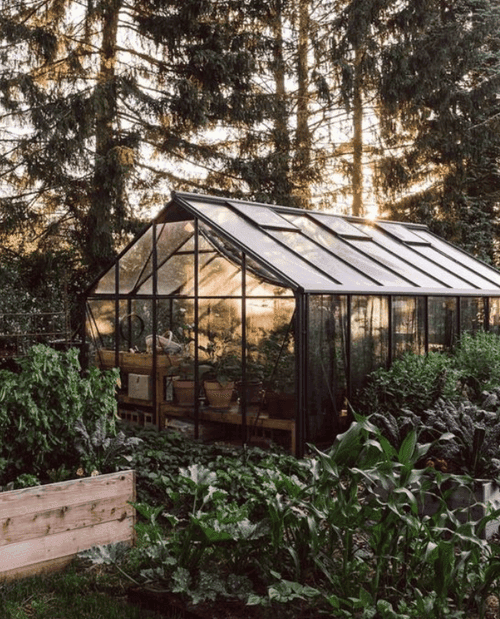The Future of Greenhouses: Advancements in Lasting Agriculture
Are you interested about the future of greenhouses and just how they are transforming sustainable agriculture? Look no further! In this post, we will certainly discover the interesting technologies that are paving the way for a greener and extra efficient farming market. From advanced climate control systems to vertical farming methods, water-efficient watering methods, sustainable power assimilation, and wise information analytics, these innovations are changing the means we expand our food. Prepare yourself to discover the future of sustainable farming in greenhouses!
Advanced Climate Control Systems
To attain optimal expanding conditions, you can depend on the innovations in greenhouses with innovative climate control systems. These systems have actually transformed the way we cultivate plants, giving a controlled environment that contributes to plant development. With these innovative systems, you can now control temperature, humidity, light levels, and also carbon dioxide focus to produce the best conditions for your plants to flourish.
Among the crucial functions of these advanced environment control systems is their ability to control temperature level. By utilizing sensors and automated controls, the greenhouse can change the temperature based upon the particular requirements of the plants. This makes certain that they are never revealed to severe warm or chilly, which can be detrimental to their growth.
Humidity control is an additional important element of these systems. By maintaining the excellent moisture levels, you can stop problems such as mold, mildew, and disease from affecting your crops. These systems can also control the quantity of light that reaches the plants, guaranteeing that they receive the optimal quantity for photosynthesis.
Furthermore, progressed environment control systems can even adjust CO2 focus. By raising the levels of CO2 in the greenhouse, you can enhance plant growth and performance. This is specifically beneficial in areas with low natural carbon dioxide levels.
Vertical Farming Techniques
One vital vertical farming method is utilizing piled growing systems. Stacked growing systems are commonly used in urban locations where space is limited.
One prominent approach is recognized as vertical hydroponics, where plants are expanded in nutrient-rich water without soil. This strategy is highly reliable as it reduces water use by up to 90% compared to conventional farming techniques. In addition, given that the plants are expanded inside your home, they are protected from pests and diseases, lowering the demand for chemicals.
Another method is aeroponics, which involves suspending the plant roots in a haze or air setting. This method enables optimum nutrient absorption and oxygenation, causing faster development and higher returns. Aeroponics additionally makes use of much less water than typical farming and can be applied in upright systems, making it a prominent selection for vertical farming.
Water-efficient Irrigation Techniques
When it comes to applying water-efficient irrigation approaches in sustainable agriculture,Making best use of water conservation is crucial. With international water shortage coming to be a pushing problem, it is vital to create innovative techniques that optimize water usage in greenhouse operations.
One encouraging method is drip irrigation, which provides water straight to the plant roots, minimizing waste and dissipation. By making use of a network of tubes with little emitters, water is applied gradually and specifically, guaranteeing that plants get the essential moisture without excess drainage.
One more reliable method is making use of soil moisture sensors. These devices determine the wetness web content in the dirt and offer real-time data to farmers. By keeping an eye on the dirt's wetness degrees, farmers can accurately figure out when and how much water to use, avoiding over-irrigation.
Additionally, the execution of rainwater harvesting systems is obtaining appeal in greenhouse agriculture. Accumulating rain from rooftops and keeping it in containers enables farmers to utilize this natural deposit for irrigation functions, minimizing dependence on typical water resources.
Last but not least, the fostering of automated irrigation systems can considerably improve water effectiveness. These systems utilize sensing units to spot soil moisture levels and weather conditions, changing watering schedules accordingly. By maximizing water usage based upon actual plant needs, these systems can minimize water waste and advertise sustainable farming methods.
Renewable Resource Integration
Eco-friendly power integration in greenhouses supplies several advantages, consisting of decreased running prices and decreased reliance on non-renewable energy sources. The created power can then be used to run numerous operations within the greenhouse, such as illumination, home heating, and air flow systems. These turbines harness wind power and convert it right into electricity, which can be made use of to supplement the power needs of the greenhouse.
Smart Data Analytics and Automation
To enhance the effectiveness of your greenhouse procedures and maximize resource usage, think about implementing clever data analytics and automation. Smart information analytics involves accumulating and assessing information from different sensing units and tools within your greenhouse.
Automation, on the various other hand, involves utilizing modern technology to automate jobs that were previously done by hand. This can consist of automating the control of lights, ventilation, watering systems, and nutrient distribution. By automating these procedures, you can ensure that your plants receive the ideal conditions and nutrients at the best time, without the requirement for consistent hand-operated intervention. This not only conserves you time and initiative however also reduces the risk of human error.
Additionally, wise information analytics and automation can interact synergistically. The data accumulated by sensors can be utilized to inform automatic systems, allowing them to make real-time adjustments based on the existing conditions. This assimilation of information analytics and automation can cause extra efficient and precise resource allocation, inevitably resulting in greater yields and much better crop quality.
Conclusion
Finally, the future of greenhouses in lasting agriculture looks promising. With sophisticated environment control systems, upright farming methods, water-efficient watering methods, and renewable energy integration, greenhouses are coming to be extra environmentally pleasant and efficient. Furthermore, the use of wise information analytics and automation better improves efficiency and lowers waste. These advancements are leading the way for a much more lasting and effective farming sector, guaranteeing a greener and much healthier future for all.

By optimizing water use based on real plant requirements, these systems can decrease water waste and Monarch Farm Greenhouse Utah promote lasting farming techniques.
